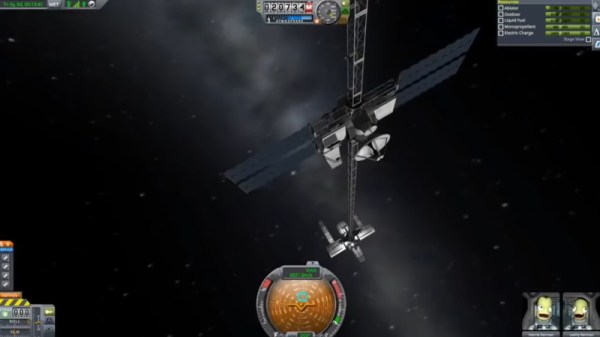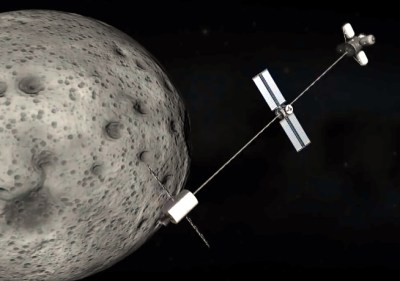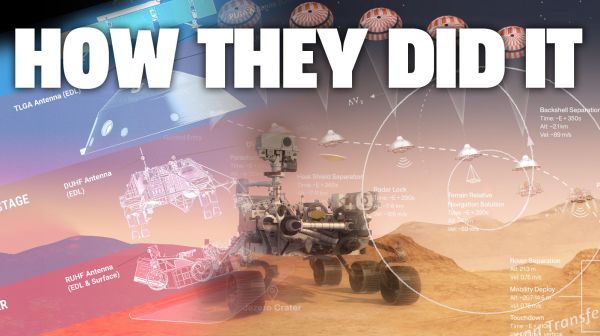There’s much news from the Jezero Crater on Mars this week, and all of it was good. Not only did the Ingenuity helicopter make history by making the first powered, controlled flight of an aircraft on another planet, it made a second longer, more complex flight just a couple of days later. This time, the autonomous rotorwing craft flew to a higher altitude than the maiden flight, hovered for a bit longer, and made a lateral move before landing safely again on the surface. Three more flights of increasing complexity (and risk) are scheduled over the next two weeks, with the next set to happen early Sunday morning. I have to admit that even though the Ingenuity tech demonstration seemed a little like a publicity stunt when I first heard about it, especially when compared to the Perseverance’s main mission of searching for evidence of life on Mars, the Ingenuity team’s successes have made a believer out of me.
Speaking of technology demonstrations, NASA fired up the MOXIE experiment aboard Perseverance for the first time. Intended to explore the possibility of producing oxygen from the thin carbon dioxide-rich Martian atmosphere, the Mars Oxygen In-Situ Resource Utilization Experiment made about 5.4 grams of oxygen total at a rate of about 6 grams an hour. We detailed the technology MOXIE uses, called solid-oxide electrolysis, which depends on a scandium-stabilized zirconium oxide ceramic electrolyte to strip the oxygen from superheated carbon dioxide using an electric current. Should the technology prove itself over the planned total of ten MOXIE runs over the next few months, a scaled up version of the device could someday land on Mars and produce the estimated 55 metric tons of oxygen needed to fuel a return trip from a crewed mission.
By now we’ve all heard about the global semiconductor shortage, or perhaps felt the pinch ourselves while trying to procure parts for a build. It’s easy to count the crunch as yet another follow-on from the COVID-19 shutdowns and the logistics woes the pandemic begat, so one might have hope that with lockdowns easing up around the world, the shortage will soon be over as manufacturers ramp up production. But not so fast — it looks like the machines needed to make the chips are the latest victims of the shortage. According to Nikkei Asia, wire bonding machines, wafer dicers, and laser drilling machines are all in short supply, with orders for new machines booked out for a year. Like toilet paper this time last year, chip makers are hoarding machines, ordering 50 or 100 of them at a time, in the hopes of having enough to meet production goals. And when machines are available, travel restrictions are making it difficult to get on-site installation and support from factory reps. The bottom line — this isn’t over yet, not by a long shot.
We all know the Stack Overflow memes, and few of us who are being honest haven’t squirmed a bit when thinking about just how screwed we’d be without being able to copy a bit of code to get us past that rough part in a project. But just how often do people copy code from Stack Overflow? Quite a lot, actually, if SO’s analysis of the use of copy commands on their pages is to be believed. For two weeks, SO monitored the number of times the Ctrl-C (or Command-C, if that’s your jam) key combination was pressed. They toted up over 40 million copies, most often from the answers to questions and almost always from the code blocks within them. We suppose none of this is exactly unexpected — memes are memes for a reason, after all — but what we found surprising is that one in four visitors to Stack Overflow copied something within five minutes of loading a page. Being charitable, we’d say the speed with which coders accept someone else’s work is an indication that maybe they were almost at an answer themselves and just needed a little reminder. On the other hand, it could be a sign of separation driving them to get something working.
And finally, while we know we’ve recommended videos from Grady at Practical Engineering recently, we couldn’t help but plug another of his videos as a must-watch. This time, Grady tackles the Suez Canal blockage, and he presents it in the same dispassionate, informed way that he previously handled the engineering roots of the Texas blackouts. If you think the Ever Given grounding was just a case of poor seamanship, think again — Grady makes a compelling case for possible hydrodynamic causes of the incident, including “squatting” and the bank effect. He also speculates on the geotechnical forces that held the ship fast, in the process of which he helpfully introduces the concept of dilatancy and how it explains the way your feet seem to “dry out” a zone around them as you walk across the beach.
















